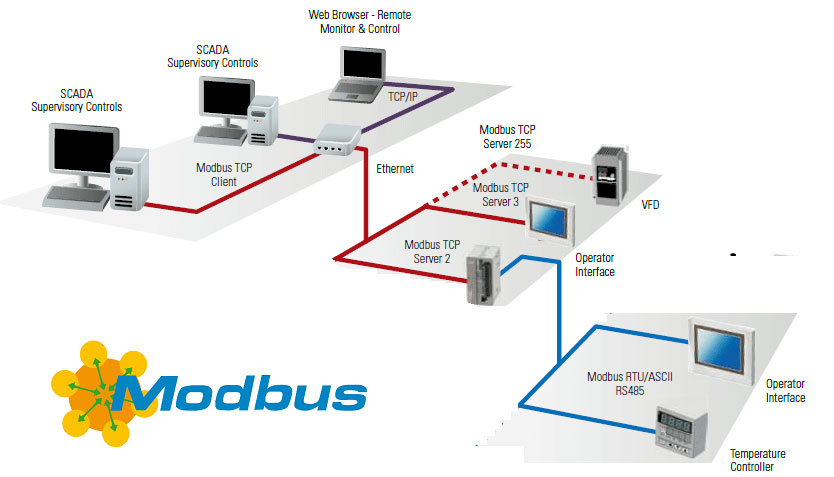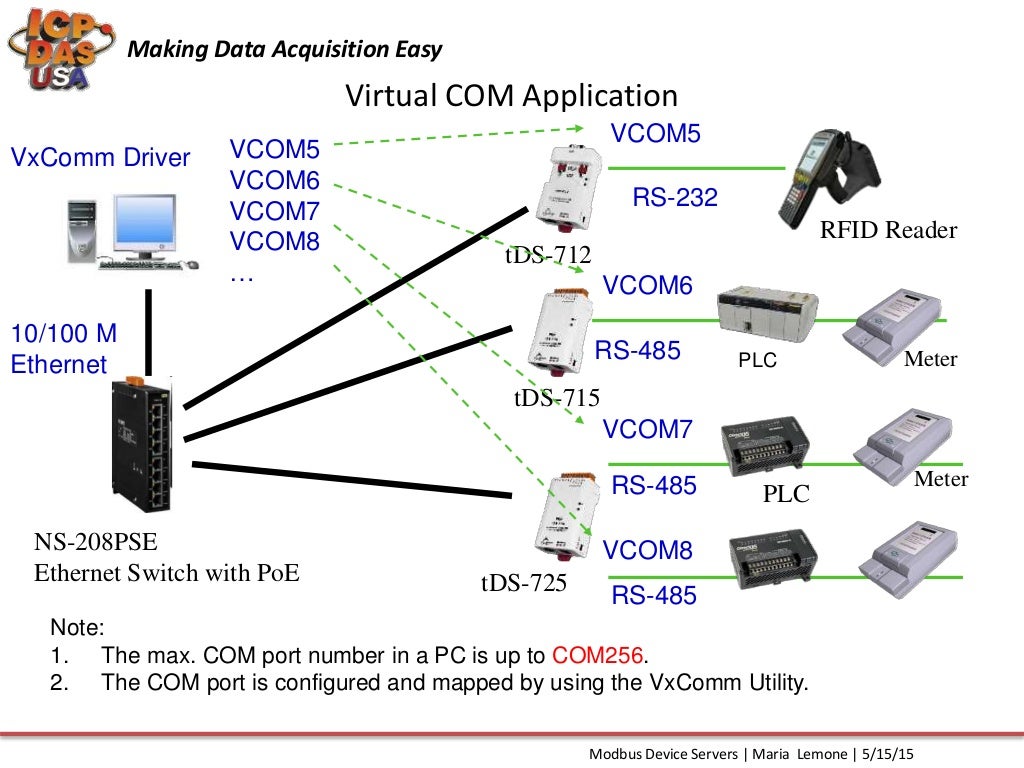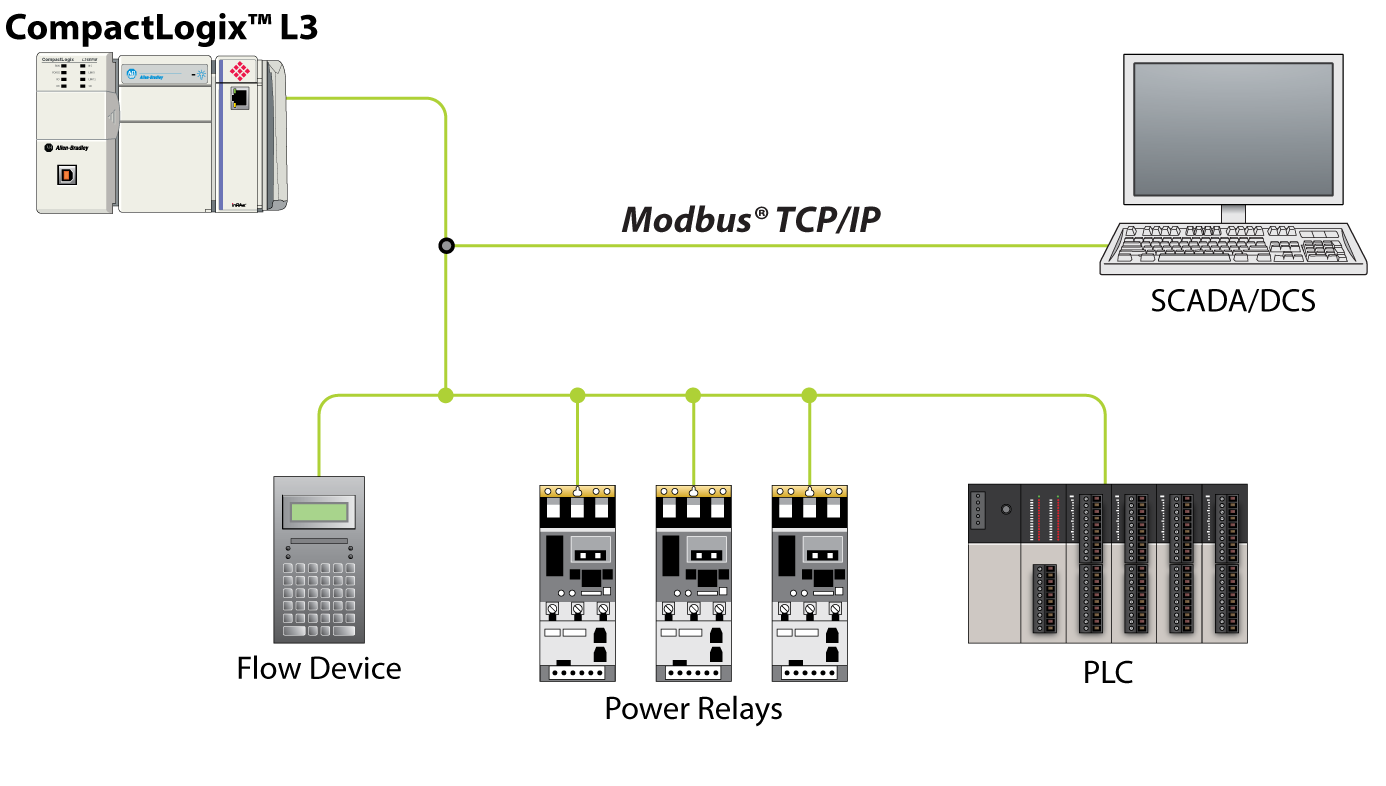

- #Modbus server and device not communication serial
- #Modbus server and device not communication Patch
- #Modbus server and device not communication Pc
For example, when it is necessary to set a sensor type before starting the data exchange. This tab is for previously data initialization. There is also a Modbus Slave Initin the configuration dialog of the slave device. Here you can select any project variable and assign it to any channel after pressing OK. Simply double-click the field of the required channel in column Variable and click on the button now available to access to access Input Assistant. When all desired channels are added, activate the ModbusGenericSerialSlave I/O Mapping tab to assign the variables already present in the project to the input and output channels. All parameter descriptions can be found in the Codesys Online Help (Ctrl + Shift + F1). To add a channel, click on the Add Channel button in the Modbus Slave Channel tab and then set the necessary parameters in the opened window. A channel is a group of register addresses which are arranged one after the other and are only queried for a certain function. The further settings are about specifying the communication channels. The Slave device connected to the COM port has similar parameters: The timeout specified here overwrites the general setting Response Timeout of the associated master. Response Timeout – the time interval in which the master waits for the response from the slave device.Unit-ID – the network address of the Slave device in the range between 1 and 247.Slave IP Address – the IP-address of the Slave.The Modbus TCP Slave entry has the following parameters: Now the Slaves are available in the Device tree, and you can double click to open the configuration dialog. Just select Modbus Slave or Modbus TCP Slave, depending on the port type (COM or Ethernet). When the Master devices are configured, it is time to add Slaves through the already well-known Add device dialogue window. This parameter defines the length of time that the master waits between the last response (or timeout) and the next query. The COM interface has a similar configuration procedure, but you have to set the Time between frames parameter sinstead of the Socket interface parameter. The Socket Timeout parameter defines the maximum period of time in which the master waits for the coming TCP/IP packages. This timeout is taken over for each slave device. If there is no response during this interval, the master then polls the next slave device. The Response Timeout parameter defines the time interval in which the master awaits the response from the slave. The Modbus TCP Master has two configuration parameters: Response Timeout and Socket Timeout. To configure these devices, correspondent editor can be opened by double clicking on the entry of the master in the device tree. Now the Master devices are available in the Device tree.
#Modbus server and device not communication serial
In the opened window select Modbus Serial Master for the COM port or Modbus TCP Master for the ethernet port. First, add a master device to the "Modbus COM" port by using the option Add Device again.

If the desired interface of the SPK207 is to be used as Master, a Master device should be added in the Device tree to this interface. Just select Ethernet in the Add Device dialogue instead of Modbus. In a similar way you can add the Ethernet port. You have to double-click port Modbus COM to open tab Modbus Serial Port Configuration and set the required parameters. Now a serial port is available in the Device tree. The Alt+0 keyboard shortcut opens the Device tree, so that you could right-click on the target device (akYtec SPK2xx) and select the Add device option in the context menu.Īmong the appearing interfaces you have to left-click Modbus to select item Modbus COM of the same target device version or an older one.Ĭonfirm your selection by clicking the Add device button in the dialogue window.
#Modbus server and device not communication Pc
When the SPK207 is successfully connected to the PC (see Appendix C in the User guide or watch the video tutorial), you can open any previous project in CODESYS or create a new one. General technique for configuring interfaces in CODESYS 3.5

#Modbus server and device not communication Patch
This article details the steps required to properly configure the SPK207 for data exchange via Modbus protocol in CODESYS v3.5 SP3 Patch 5. There is the possibility to connect the akYtec Mx100 I/O modules via the RS485 interface as well as any other modules via the ethernet interface to this control panel. Since the SPK207 does not have its own inputs and outputs, expansion modules must be used. For example, there is a need to carry out climate control in a vegetable storage facility based on the akYtec SPK207 control panel. When developing an automation system using CODESYS, one often faces the task of implementing a fieldbus system.


 0 kommentar(er)
0 kommentar(er)
